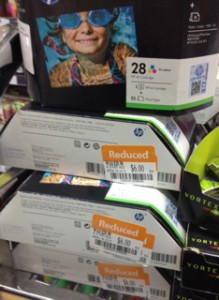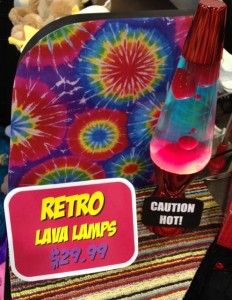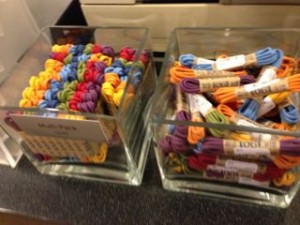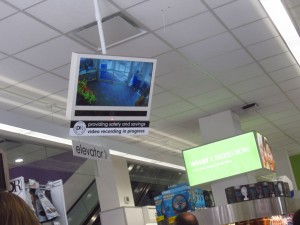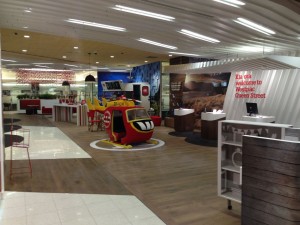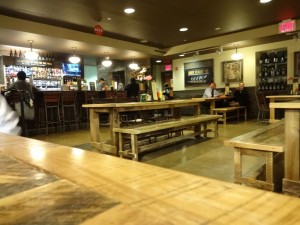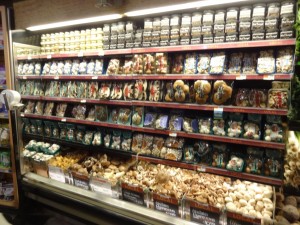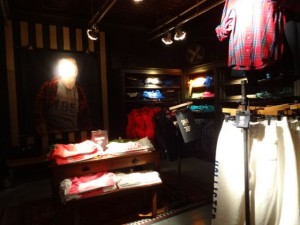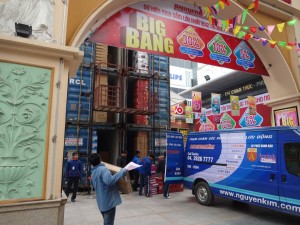I am fortunate to get to see plenty of newsagency businesses. I visited one recently that was losing several thousand dollars a week. Without identifying the business, here are my comments in the interest of challenging more than the owners of the business I visited:
The business is far from best practice. Indeed, shop floor decisions being make appear to be more about pursuing failure than success. Simple opportunities have been ignored and your key traffic generators disrespected.
Like many newsagencies, you have excellent core traffic drivers and like many newsagencies you are not leveraging these for success with other products. I can’t understand why you would do this.
Retail is all about the in-store experience. The experience in your shop is muddled at best. There are no easily identified zones, no shopping experiences, no sense of you pursuing success.
Here is a summary of the key items we discussed yesterday, things I would immediately change to make better use of your 250 sq metres:
1. Front of store. Standing out in the mall, looking across your entrance, I see a confused message, too many messages in fact. You have posters up for items being sold elsewhere in the business. Some posters are unnecessary. For example, I’d remove the newspaper poster unit altogether. Try this and I am certain you will not see a drop in sales. The lottery poster, too, feels unnecessary – given that your counter is close to the front and carries your key, current, lottery messages. Big signs and posters at the front can be a barrier. If you give up front of store space to a poster it needs to have a clear message.
2. Discount space. You have some Christmas stock, back to school stock and other items being discounted. But they are spread across the store. I’d create a discount zone, on the left (when facing the shop) side of the shop. Put everything discounted there. Make a compelling visual message around this. Be bold. Visually separate it from the rest of your shop.
3. Cards. Open up the entrances to the aisles. Let those passing by in the mall see your depth of range. Cluttering the entrance to your premium card aisle with a spinner full of cheap cards is the wrong message. This big spinner and your collection of other spinners hide the card department.
1. Stop your card merchandiser putting out cards. Do this yourselves – checking each order as you go … reject stock you do not need.
2. Use your merchandiser to add value to the card offering.
3. Put in place a process where you formally authorise each order.
4. Claim an immediate credit for any stock not ordered.
4. Card supplier. I was shocked to see you so overloaded by one of your card suppliers. This is your fault, you have let them get away with it. While you can complain that the supplier has done this to you, I suggest you are better off taking responsibility as a change in your processes can stop it happening again.
5. Valentine’s Day. You have Valentines product in three different locations, making it hard for a shopper to understand your position for this season. seasons are all about a strong and purposeful presence. I don’t see this in your store. Place it all together with a simple display that makes buying a card and gift easy. Your best Valentine’s Day shopper is a guy. Guys feel comfortable shopping in newsagencies. They need to be guided (by you) though. Place Valentine’s Day at the front, in the centre, facing into the mall.
6. Plush. You have a small but strong range. This would do better if you brought it all together into one space and somewhere your target customers for plush could see it. Personally, I’d replace Valentine’s Day Friday morning this week (Feb. 15) with a kick-ass plush display. Show people that you really are in the plush space.
7. Darrell Lea. You have this product in three locations, diluting the value of any brand pitch. Outside of key seasons, the value of darrell lea is not obvious in your business data.
8. Newspapers. While these are well positioned, it does not make sense to have them next to Girlfriend and Dolly magazine. Do you expect your newspaper customers to purchase these titles. Better Homes and Gardens would be better next to the newspapers. This is a good example of the need to take a moment to think about adjacencies. By putting something that will appeal to your average newspaper customer next to newspapers you are likely to get more value from newspaper traffic.
9. Magazines. Your layout was last re-done more than a year ago. You need to do another relay. Follow your instincts. Create guy areas and girl areas – keep them separate.
10. Gifts. You need to bring these together and to tell a story with what you stock. You have excellent traffic yet gifts could do better. By creating an anchored department focused in your average shopper will lift gift sales. I’d get the products off the back wall and to the front. People will not come to you thinking about gifts. Use the back wall for what people will come to you for.
11. Stationery.
1. Switch to Canson for your A2 card. It’s better quality. Stop selling at $1.30 and go immediately to $2.00.
2. Get your A2 card into a display unit that promotes the product rather than hides it. What you have today is an homage to a shop-fitter who knew little about retail.
3. Stop your stationery rep ordering for you. order yourselves.
4. Put in place a structured mark-up policy. Given that much of your stationery is sold because of convenience, you can charge more that you currently charge.
5. Review the stationery you carry, look at when you last sold each item in stock. If it’s been on the shelves for six months or more you have to wonder why you carry this.
6. Stop reps ordering for you. Use your computer system. that’s what it’s there for. Printing a reorder report for a rep, based on good data, takes seconds. You will find yourself with less stock that does not sell.
12. Roster. If this was my business, I’d be spending at least 25% less on the roster than you currently spend – based on your sales. The business owner needs to control the roster. In your case, it’s accounting for considerable more of your GP than I’d expect in an average newsagency. Cutting the roster is urgent.
13. Overall. You have lots of signs, posters and messages hanging from the ceiling and on walls. Each sign must serve a purpose, a call to action to shoppers. Too many signs can confuse. I think that is what is happening with you. I’d cut the number of signs in half. Your best sign placement is what you have in your card aisle – a single message repeated.
14. Discount space. To the left of the shop, in the space where we talked about you placing everything on discount, make sure that your signs are clear and impactful. If you have a JB HiFi in your centre, go copy what they do. They are the masters of the discount signage.
What you have is the basis for a good newsagency, one that is more successful than what you are experiencing today. The first step toward achieving greater success is to take control of the business and all who work in it. It’s your business, your money. You are responsible for everything in there.
Accepting personal accountability for a situation is a challenge for anyone. My experience is that it is the first step in the road back, the road to recovery. Your situation today is 100% your responsibility just as your success from here will be your responsibility.
While it can be easy to feel daunted since you are relatively new at this newsagency game, trust your instincts. I don’t care if you have employees who have been in the business more than you. It’s your business and your money. You have to allow yourselves to make mistakes. The current approach of giving your employees more say than they should have is not working.
I apologise for the directness of my comments. My only intention is to help you create a more successful and valuable business.
I’d be happy to answer any questions you may have.
Please note that I’ll likely publish a sanitised version of this on the newsagency blog (without any identifying information) to help other newsagents look at their business differently.
Each of the areas noted above is within the control of the business owners. Too often, newsagents complain about parts of their business they do not control and ignore the parts they can control. More core message is to manage what you can manage, every day.
Manage to drive shopper efficiency.
Manage to attract new traffic.
Manage to keep costs low.
Manage to bring shoppers back.
Manage to leverage your core traffic traffic generators.
The headline of this post – How one newsagency was managing for failure – is, in itself a wake up call for this business and many others. Suppliers will not resolve or fix the challenges of the channel. It’s up to us – now more than ever.
Footnote: this post is not about the business I have written about. No, it’s intended to help newsagents look at their businesses through these, critical, eyes.
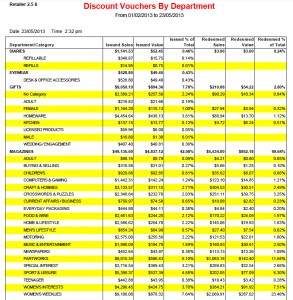 Further to my blog post recently about the success I’m seeing with Discount Vouchers, here is an extract from a report showing shoppers use the vouchers.
Further to my blog post recently about the success I’m seeing with Discount Vouchers, here is an extract from a report showing shoppers use the vouchers.